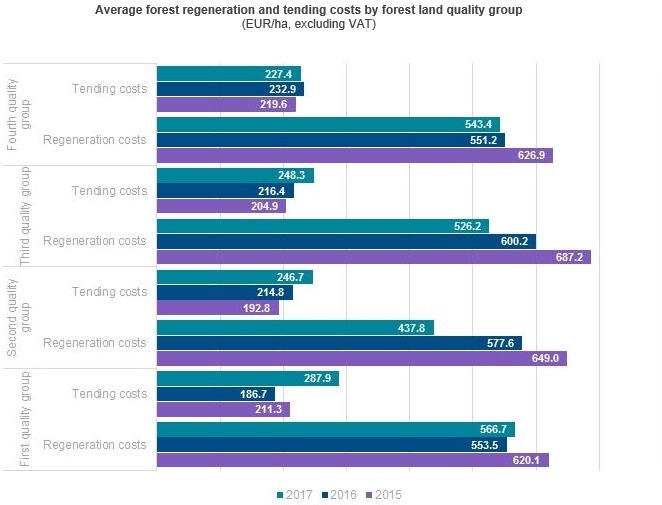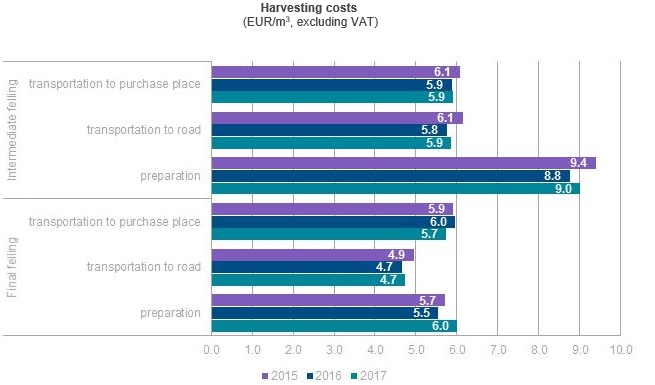Analytics, Financial Services, Latvia, Markets and Companies, Woodwork
International Internet Magazine. Baltic States news & analytics
Saturday, 20.04.2024, 08:58
In 2017, forest regeneration cost kept declining, while tending costs growing in Latvia
 Print version
Print versionIn 2017, the highest forest regeneration costs were recorded in the forests of the first forest land quality group (566.7 EUR/ha), while the lowest – in the forests of the second forest land quality group (437.8 EUR/ha); which is 2.4 % and 24.2 % less than a year ago, respectively.

In 2017, the average forest tending costs in Latvia have grown in almost all forest land quality groups and comprised on average 227–288 EUR/ha. The highest forest tending costs, which include agro-technical tending of forest and tending of young growths, were observed in the forests of the first forest land quality group – 287.9 EUR/ha, which is an increase of 54.2 %, compared to 2016.
In 2017, the average harvesting costs of one cubic meter of timber grew slightly in both final felling and intermediate felling. In the final felling, within which the respective part of the forest is felled almost completely, the average harvesting costs, compared to 2016, have risen by 2,1 %, constituting 16.5 EUR/m3. Harvesting costs in the intermediate felling (thinning, reconstructive felling and sanitary clear felling), within which the respective part of the forest is fallen partly, increased by 2.0 %, reaching 20.8 EUR/m3. The total harvesting costs in final felling and intermediate felling are formed by the costs of labour, transportation, and machinery used. Wood cutting in the intermediate felling is performed by sampling trees, therefore the total harvesting costs in this felling type are higher than in final felling where almost all trees are cut.

More information on average forest regeneration, tending and harvesting costs is available in the CSB database in section Forestry.
1First forest land quality group includes poor pine forest on wet, pine forest on peat soil.
Second forest land quality group includes pine forest, Callunosa mel., Callunosa turf.mel., Vaccinioso-sphagnosa, Myrtilloso-sphagnosa, Myrtilloso politrichosa, Caricoso-phragmitosa, fen, Filipendulosa.
Third forest land quality group includes pine forest with spruce understorey, rich deciduous forest, Vacciniosa mel., Vacciniosa turf.mel.
Fourth forest land quality group includes Myrtilloso-sphagnosa, spruce forest, rich deciduous forest, Myrtillosa mel., Myrtillosa turf. Mel., Mercurialiosa met., Oxalidosa turf. mel.








 «The Baltic Course» Is Sold and Stays in Business!
«The Baltic Course» Is Sold and Stays in Business!

